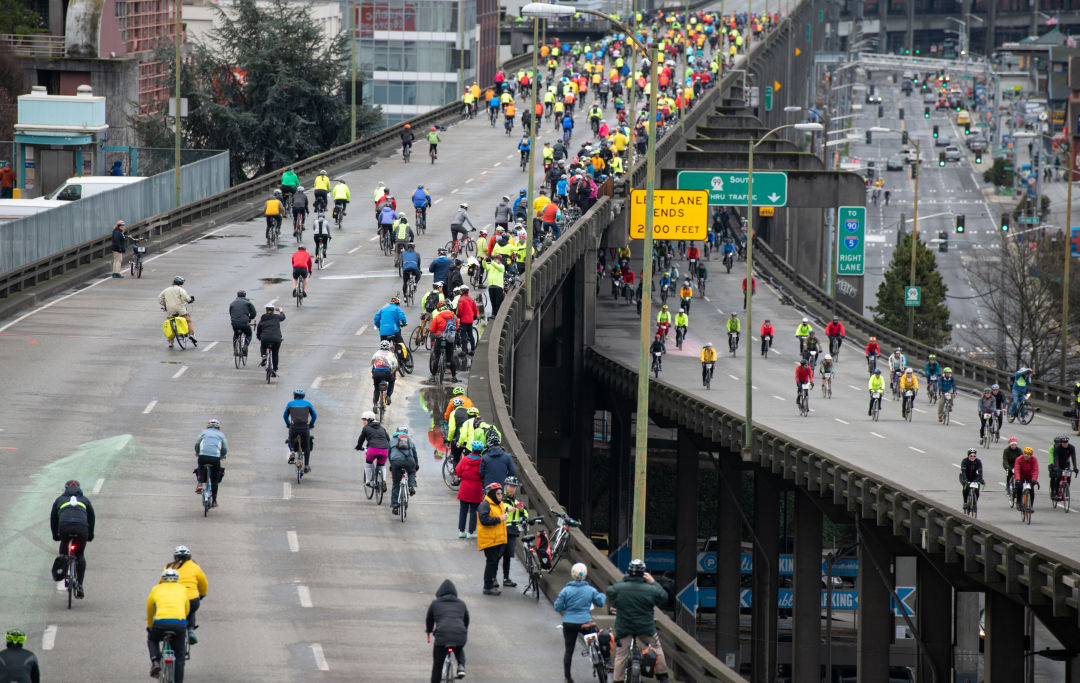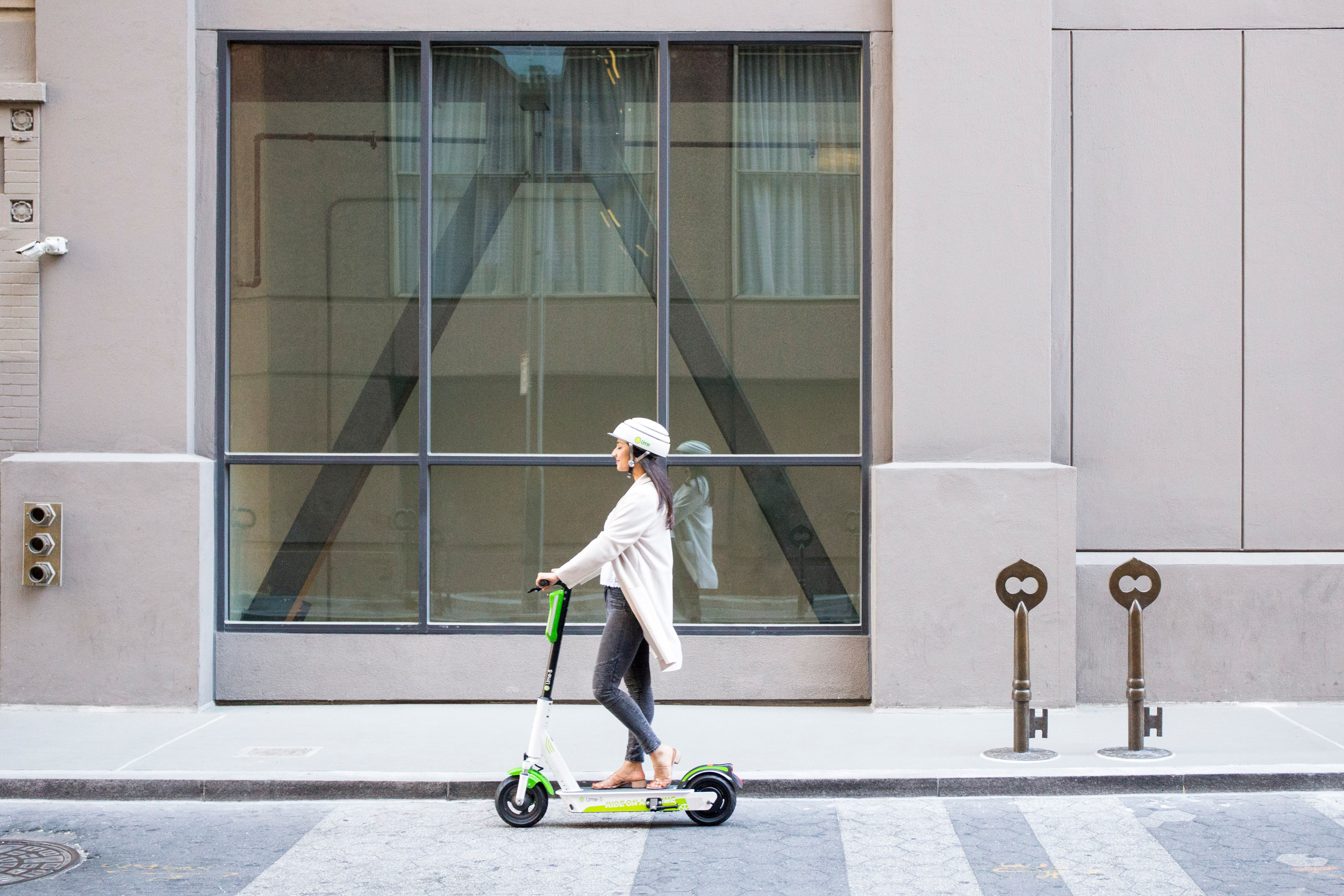Seattle Isn’t a Bike Town for Everyone. This Group Wants to Change That.

Seattle Bike Train was formed to help average Seattleites commute in a post-Viaduct world.
Image: Shutterstock by Anna Hoychuk
Seattle dreams of being a bike city. Last week, The Seattle Times declared that “biking in Seattle is a way of life.” Last October, Bicycling Magazine named us the best bike city in America, cuing howls from unbelieving cyclists. Despite our aspirations, though, bike commutership is low. The city’s much-touted bike master plan has been delayed or whittled back in response to vocal critics. City officials hope that the recent scooter share proposal will encourage new safe-streets infrastructure, but for now, our city is still intimidating for would-be two wheeled commuters.
Seattle Bike Train wants to change that. On Friday mornings—and one Saturday each month—the Bike Train meets at three locations across the city and rides together into downtown: “a carpool for bike commuters,” as their website puts it.
“We’re pitched towards people who are very new,” said Kimberly Kinchen, the Bike Train’s founder. By pairing experienced commuters with people who’ve just hopped on a Lime bike, they want to take the mystique—and fear—out of bike commuting. The first rides happened just after the Viaduct closed, as people were looking for new ways to get around the city. Phyllis Porter, a city council candidate and longtime bike activist in South Seattle, remembers that at one post-Viaduct neighborhood meeting people were worried about getting to work. “Some people said, ‘Well, I might ride a bike.’ But then it would be, ‘I’ve never ridden a bike.’ Or, ‘It’s not safe.’”
Unlike some bike groups, Seattle Bike Train doesn’t want to make cycling a way of life. On weekend rides, Kinchen says, “I’ll intentionally wear fancy boots and a dress. It’s not competitive, there’s no special gear, you don’t need to be athletic.” Robert Getch, another organizer, brings his own helmet, but uses an e-bike share. Although experienced riders guide the Bike Train, eventually they’d like to have enough participants to forgo formal leadership.
As Porter puts it, “They're helping people get to work. Everybody can't drive a car. They take the hardest part about biking, and help you with your confidence.”
The original routes—which start in Othello and Columbia City—trace the South End. There, because of long-standing systemic racism and underinvestment, there are fewer sidewalks, let alone bike lanes, and bikers and pedestrians are frequently killed by cars. “It’s hilly, and it’s dangerous,” said Kinchen. Before launching, she and Getch spent days riding and reriding the corridor, trying to find a safe path.
Back in early March, I joined Getch in Columbia City to test out a route, and together we zigzagged through a labyrinth of side streets, neighborhood greenways, and bike paths. The hills were gentle, the traffic slow, and Getch talked me through every turn and street crossing. At dangerous trolley crossings, he stationed himself in the intersection as a crossing guard. As we crested I-90, we watched the sunrise hit Beacon Hill.
They might not turn Seattle into the bike city of our dreams—the hills aren’t going anywhere, nor is the rain—but the Bike Train’s organizers hope they can make people feel more invested in traffic safety infrastructure, a perennial flash point in neighborhood politics. As Kinchen sees it, “We know that bike infrastructure makes streets safe for everyone: pedestrians, cars, and bikes. It’s a public health issue.”




